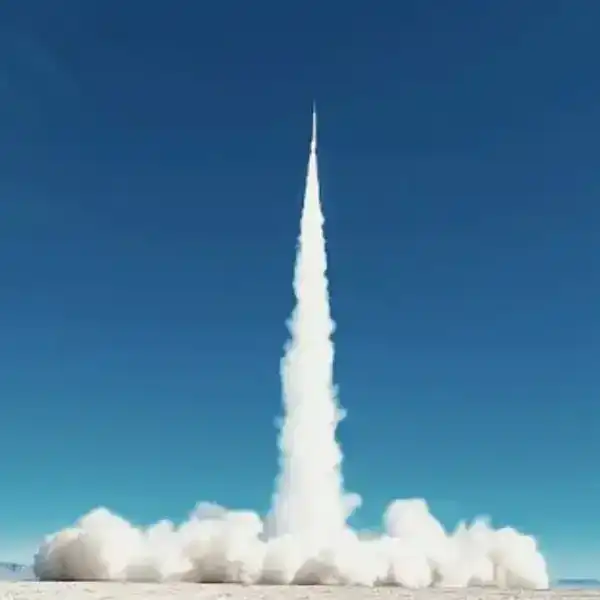
In a groundbreaking achievement for amateur space exploration, students from the University of Southern California's Rocket Propulsion Lab (RPL) have set a new altitude record. On October 20, 2024, their rocket, Aftershock II, launched from Nevada's Black Rock Desert, soared to an impressive height of 470,000 feet (143.3 km). This feat surpassed the previous record by 90,000 feet (27.4 km), a record held since 2004 by the Civilian Space eXploration Team's GoFast rocket.
Aftershock II, standing 14 feet (4 m) tall, broke the sound barrier within just two seconds of its launch. It reached a maximum speed of 3,600 mph (5,800 km/h), which is 5.5 times the speed of sound, merely 19 seconds after takeoff. This speed slightly exceeded the previous record set by GoFast in 2004. Although the rocket's engine burned out shortly after launch, Aftershock II continued its ascent, leaving Earth's atmosphere approximately 85 seconds post-launch and reaching its peak altitude in 92 seconds. At this apex, the rocket's nose cone detached, deploying a parachute to ensure a safe return to Earth, where it was successfully retrieved by the student team.
The success of Aftershock II is credited to the technological innovations developed by the RPL team, comprising 100 students. The rocket featured titanium-coated fins and a new heat-resistant paint to endure the extreme temperatures encountered at high speeds. Moreover, student-engineered computer systems enabled real-time tracking and live data transmission throughout the flight.
"This was probably the coolest thing we had ever gotten the opportunity to do," expressed Operations Lead Jayna Rybner. "We’re just college students who have homework and dishes and groceries to do, and we just sent a rocket to space. We broke the world record and sent a rocket higher than anyone ever has."
Established in 2005, RPL's mission is to design and launch student-built rockets into space. The group first made history in 2019 when their Traveler IV rocket became the first student-built rocket to cross the Kármán line, the boundary of space at 328,083 feet (100 km) above Earth's surface.
Future Endeavors and Goals
Looking ahead, RPL's ambitions do not include constructing rockets for even higher altitudes due to the requirement for special permissions. Instead, the team intends to focus on developing "sounding" rockets, which are designed to carry scientific instruments into space for research purposes.
"Actually, 470,000 feet is just shy of the limit for amateur rocketry, which is 490,000 feet," explained RPL Executive Engineer Ryan Kraemer. "Unless we want to get special clearances, we are going to have to stay under that height, but we are going to move forward in the sense of flying research payloads. We’re excited to use, essentially what is a sounding rocket at this point, to gather data for whoever wants it."